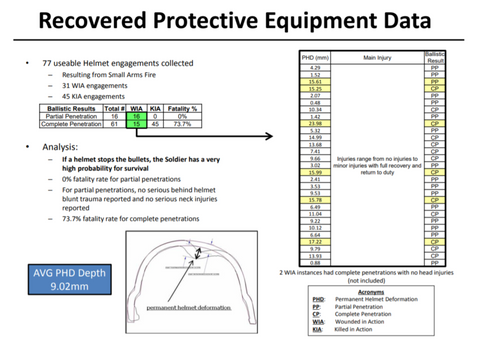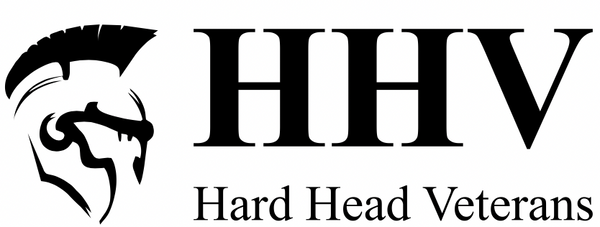The New ASTM Ballistic Helmet Test Protocol and the Evolving Landscape of Helmet Testing Standards
ASTM E3368/E3368M-23
The National Institute of Justice (NIJ) has long been at the forefront of body armor testing. Its standards for protective gear, such as the body armor standard 0101.06, have become the global default. Foreign militaries, when buying protective gear, will frequently specify that it needs to meet a certain performance level detailed in an NIJ specification. This is true more often than not.
There is, however, a puzzling gap: The NIJ doesn’t have an active specification for ballistic helmets. Admittedly, they have a helmet testing standard, 0106.01, but it is obsolete and deprecated; it hasn't been updated in 40 years, and it is not in use for helmet certification. Now, as threats evolve and new challenges arise, the NIJ's absence from the vital area of ballistic helmet testing has become increasingly conspicuous.
Enter the ASTM (American Society for Testing and Materials), which has recently released a ballistic helmet specification of its own. While this move aims to fill an immediate void, it has also opened up a host of new questions and concerns. The greatest of these, which the aim of this post is to review, is this: At all threat levels, from HG1 to RF3, the ASTM standard has done away with backface deformation limits. No more clay headform, no more 25mm indentation limit; if the helmet stops the threat, even if it's completely caved-in, it passes.
A Charitable Analysis of ASTM's Omission of BFD Limits
There's a charitable way to interpret this. It begins with the obvious assertion that “the way helmets are tested in laboratories does not reflect how they're impacted in the field.” The lab test – with its dead-on, 0° impact angle shots, always at muzzle velocity – is clearly a worst-case scenario. In combat, impact angles, velocities, and shot locations are far less predictable – and it should be quite clear that a 7.62x39mm bullet is statistically unlikely to strike your helmet at 2400 fps and a 0° angle of obliquity; it's far more likely to strike from a 300 yard standoff, at a substantially reduced velocity, at an angle anywhere from 15° to 60°. We demonstrate this in the following video.
Further, combat helmets often function as ricochet surfaces for projectiles, and the full kinetic energy load of those projectiles isn't absorbed by a helmet shell struck during combat operations – rather, it's redirected. Many if not most recorded impacts upon helmet crowns and sides are of this glancing variety.
With those two assertions taken into account, it should be quite clear that helmet deformation in practice will be far lower than what's observed in laboratory testing. And data from combat operations in Iraq and Afghanistan illustrates it plainly.

In every case where a soldier was shot in the head, but the helmet stopped the round, (1) no serious behind helmet blunt trauma was reported, and (2) no serious neck injuries were reported. This despite the fact that many of those helmets were hit with high-energy 7.62mm rifle projectiles which, though fired from a significant stand-off, still possessed more energy than the 9x19mm test projectile in some instances.
In contrast, every case where a bullet penetrated a soldier's helmet resulted in serious injuries or fatalities. Nearly 75% of helmet penetrations, in fact, resulted in a fatality. And the ones who lived suffered considerably worse injuries than those soldiers whose helmets stopped bullet penetrations.
This, taken at face value, seems to lead to the conclusion that the ability to stop bullets and other projectiles should be the core focus of helmet designers, with behind-helmet blunt trauma a distant secondary or even tertiary concern. People involved in the drafting of the ASTM specification have expressed this very opinion.
Yet it appears to be a flawed conclusion in both obvious and subtle respects.
A Critical Analysis of ASTM's Omission of BFD Limits
Today’s popular helmets are, for the most part, not of the same materials and construction as the ACH that was used in Iraq and Afghanistan. It is well known that modern helmets, made of UHMWPE, deform to a considerably greater extent upon impact. Some would argue that this is a feature, not a bug: Deformation is one mechanism by which ballistic materials absorb kinetic energy from projectiles, so a helmet that deforms to a greater extent can potentially absorb more energy from an incoming projectile, reducing the risk of penetration. Yet, as shall be described below, the deformation itself can be a source of concern, and furthermore it’s far from clear that data derived from the Kevlar helmets which saw use in Iraq and Afghanistan can be extrapolated to today’s UHMWPE helmets.
By definition, behind-helmet blunt trauma (BHBT) injuries occur without helmet shell penetration, as the absorbing the kinetic energy and momentum of impact forces the helmet shell to deform, and the shell comes into contact with the wearer’s head at a high rate of speed. A review of the literature on BHBT mechanisms highlights this very risk, indicating that while fatalities are significantly higher when bullets penetrate the helmet, non-penetrating impacts can still result in serious trauma.
Investigators at the US Army Research Labs, in a paper titled “Experimental Methodology using Digital Image Correlation to Assess Ballistic Helmet Blunt Trauma,” that BHBT injuries are mechanically similar to injuries from blunt weapons and less-than-lethal projectiles such as beanbags or rubber bullets.

In other words, BHBT injuries occur, without motion of the head, when the helmet shell comes into contact with the wearer’s scalp at a high rate of speed leading to scalp laceration, skull bending, and skull fractures. This is exactly analogous to a baton or club striking the head.
The risk of skull fracture depends on helmet standoff distance, shell stiffness, and padding type – but, in typical cases where an ACH helmet is struck by a 124-grain 9mm FMJ projectile at 1400 feet per second, that risk can be considerably higher than 50%.
When a lightweight UHMWPE helmet is impacted under identical conditions, it would fare considerably worse. And what of the risk of skull fracture when a UHMWPE helmet is struck, under test conditions, with a 7.62x39mm MSC round or a 7.62x51mm M80 Ball round? It is surely significantly higher than 50% – indeed, it’s unacceptably high. For this reason, when the original rifle-resistant ECH helmet was being prototyped by the US Military, both the Department of Operational Test & Evaluation (DOT&E) and the military medical community represented by the Army Surgeon General’s Office recommended against its fielding, warning that “soldiers wearing the ECH would have an unacceptably high risk of dying from excessive backface transient deformation from threat bullets.” For more on backface testing check out the following video.
With their excessive deformation potentially causing skull fracture – with the problems highlighted by DOT&E and the Army Surgeon General’s Office still unsolved – it remains unclear whether the new breed of UHMWPE “rifle-resistant” helmets offer comprehensive protection against rifle threats. It’s not even clear that a IIIA or HG2 helmet offers comprehensive protection against the .44 Magnum handgun threat it is supposedly rated for. A truly protective helmet, it should go without saying, is one that’s designed both to stop statistically likely threats under statistically likely circumstances, and to mitigate secondary head trauma.
Which leads us to the more general problem here: The problem of incentives. The ASTM specification does nothing to reward manufacturers who build helmets that exhibit good performance where BHBT is concerned, and in fact it punishes them. Imagine we have two helmet shells: Helmet A weighs just one pound, stops 240gr .44 Magnum SJHP, and deforms 50mm upon impact; Helmet B weighs two pounds, stops the same .44 Magnum threat, and deforms just 16mm upon impact. Both helmets are “certified” – both are rated to an identical ballistic “level,” namely HG2.
The manufacturer of Helmet A does not need to disclose the fact that the helmet they market deforms 50mm upon impact, and may therefore pose a serious risk of injury to its wearer. (Today some manufacturers already make a point of refusing to disclose their detailed test data!) In fact, that manufacturer doesn’t even need to test for backface deformation at all. Their lightweight helmet is simply “certified” to stop .44 Magnum – and, in the eyes of many if not most buyers, that will likely be good enough.
This scenario is already realistic enough; we haven’t needed to invoke rifle threats, where the RF1 7.62x51mm M80 Ball test projectile carries enough energy to hugely deform helmet shells, even if many of them might be capable of… well… “stopping” it. Stopping it, that is, though one side of the helmet nearly comes into contact with the other side, with the headform squashed in-between.
Light helmets built to the current ASTM specification are commercially incentivized in other ways: They require less material, and are therefore cheaper to produce; they don’t require complex or expensive dynamic stiffening layers; their spec-sheets look more attractive, so long as BFD isn’t mentioned. (As mentioned previously, it usually isn’t – and that data, if it exists, is often closely guarded.)
Ultimately the move away from helmet deformation testing will likely lead to helmets that deform even more than UHMWPE helmets deform currently – because this leads to better penetration resistance on a weight basis and lighter “certified” products that are cheaper to produce – with potentially serious implications for BHBT risk. This is what economists call a perverse incentive.
There is an ethical dimension to the development of personal protective gear; perverse incentives, wherever detected, should be openly raised – and specifications should always be evaluated in light of the available medical and scientific data, which seems unfavorable in this particular case.
Surely it stands to reason that the ASTM standard should be updated with a BFD limit? (Even if it’s as lax as 35mm – which is still considerably less than what some rifle-resistant helmets have exhibited under test conditions!)
We are fortunate that there are competing visions for ballistic helmet performance standards. The VPAM specification calls for stringent BFD limits, with a ceiling on the residual energy delivered to the headform. The FBI and DEA, taking inspiration from VPAM-3, have released their own helmet specification with similar provisions.
